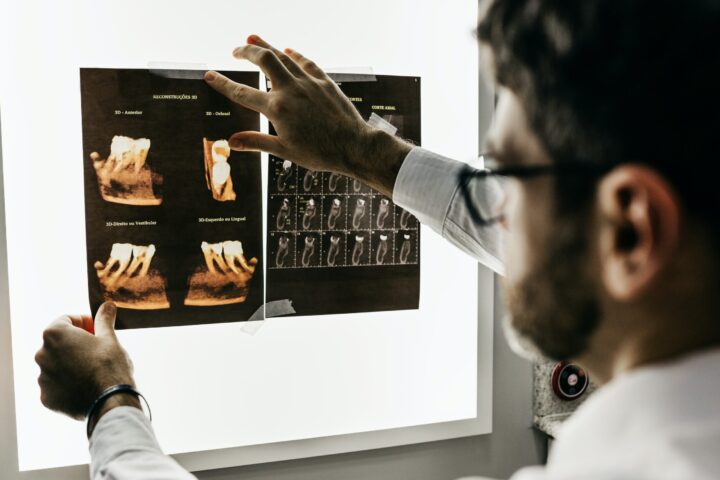Antibiotic resistance is an emerging global health emergency whereby bacteria will emerge resistant to the action of antibiotics, hence turning life-saving drugs into paper tigers. This factor extends the stay in hospitals, raises treatment costs, and heightens mortalities. In front of this problem, one has devised novel approaches while searching for solutions. AI now tends to come into the foreground as one of those powerful tools pressed into battle. Here is how AI stepped in to join the war against antibiotic resistance.
Resistance is a situation where the bacteria adapt and cease to respond to drugs anymore. This may be brought about by one or several factors, including:
Overprescription of Antibiotics: overprescription in that sometimes such prescription is done where it is not necessary;
Poor Treatment Courses: Incompletely administered courses of antibiotics make way for the adaptation of bacteria, which eventually becomes resistant to the actions of antibiotics.
Poor control over its use includes the administration of antibiotics both in agriculture and outside medical supervision to add to developing resistance.
Severe consequences include making infections harder to treat, and diseases that were commonly curable had turned deadly.


How AI Is Making a Difference
AI brings in new ideas on how to overcome the challenge of resistance. Amongst all fields in which AI has innovatively marked a difference, the most outstanding ones are those of:
1. Predictive analytics and monitoring of resistance patterns
Analysis of bulks of data will enable AI to predict and therefore follow through the patterns concerning antibiotic resistance. That is:
Data Collection: AI systems tap data from various sources, including but not limited to hospitals and clinics and research studies. Analysis of this trend will make the AI aware of resistance patterns, including what bacteria are developing resistance against what antibiotic. It aids the health professional in understanding what antibiotics have become redundant and hence helps to alter the course of treatment.
2. New Discovery of Antibiotics
Accelerating this process, AI uncovers new types of antibiotics; such a factor becomes very relevant in combat with resistant bacteria.
- AI Algorithms for Drug Discovery: Such algorithms scan chemical compounds and identify those that act against resistant bacteria, hence fast-tracking the process of drug discovery.
- Target Identification: AI identifies new targets of antibiotics inside bacterial cells that can form the basis for new treatments. This AI-enabled discovery of the drug will reduce time to market for new antibiotics, thus helping in fighting resistance.


3. Optimising Antibiotic Use
AI can optimise the available use of antibiotics in such a way that it develops resistance as an end result.
- Personalised Treatment: AI is going to study patient data and suggest the best antibiotic against a particular infection. It will make sure that the right medicine is being forwarded to the patient and limit its chance for resistance.
- Antibiotic Stewardship: AI tools support each hospital and clinic in developing its stewardship program regarding antibiotics. In the stewardship programs, it is ensured that antibiotics are used only when needed.
AI optimises the use of antibiotics so that the development of resistance gets retarded and prolongs the functional life of still-effective ones.
4. Improved Diagnostics
A very early and proper diagnosis forms a good basis on which to practice treatment and evade resistance.
- Rapid Tests: These AI-aided diagnostic tests will also test the sample bacteria for the cause of infection and further profile resistance. Thereafter, proper treatment may be done as early as possible.
- Predictive Analytics: Because of AI, based on history and patterns of current resistances, predictions on working antibiotics can be extrapolated with a high probability.
AI-enhanced diagnostic capability mediates much better and more proper treatments.
5. Monitoring and Surveillance
AI amplifies the monitoring and surveillance occurring with antibiotic resistance.
Real-Time: Today, various AI systems can monitor a range of continuous streams of data, including feeds from multiple hospitals and public health reports for trends in emerging resistance, in near real time.
Geographically, AI-powered surveillance systems track use and resistance patterns, allowing public health leaders to know where to target implementation.
Therefore, improved monitoring and surveillance allow for the timely detection of resistance and, consequently, inform public health responses.


Case Studies: AI in Action
A few real examples explain how AI is working to defeat antibiotic resistance.
1. AI for Drug Discovery: DeepMind’s AlphaFold
DeepMind’s AlphaFold is an AI system that predicts the 3D structure of proteins. The technology has been applied to antibiotic resistance research by the
AlphaFold helps researchers understand how bacterial proteins work and how new antibiotics could target them. Catalysing Drug Discovery: It gives insight into the structure of a variety of proteins important for effective treatments; thus, it catalyses the process of drug discovery.
2. Optimising Antibody Use: IBM Watson for Drug Discovery
IBM Watson for Drug Discovery applies artificial intelligence to millions of pages of biomedical data. With a constant threat of antibiotic resistance, it would
- Identify Potential Drug Targets: Find new targets for drugs in bacterial cells against which new antibiotics can be developed.
- Predict Drug Interactions: Predict the interaction of new antibiotics with other presently available drugs to reduce the potential for side effects.
3. PathAI: Improvement in Diagnostics
PathAI is an AI-enabled platform built for better diagnostics in pathology. The ways it does so include:
- Image Analysis: It performs image analysis to identify resistance patterns in bacterial cultures much quicker and with a higher degree of accuracy.
- Assisting Pathologists: It assists pathologists in coming up with very useful insights that help them diagnose better and choose a course of treatment.
Challenges and Considerations
Despite the promise, there are still quite a number of challenges facing AI in its fight against antibiotic resistance.
1. Data Quality and Availability
Artificial intelligence thrives on good data. There are, however, quite a number of challenges: partial or inconsistent data may affect performance and even reduce confidence in the artificial intelligence by a health worker; hence it needs full, proper datasets.
Data Privacy: The patient data used for training AI should have great consideration for their privacy and security.
Clearly, improvement in data quality, considering all related concerns for privacy, can become the route towards decisions as to how the aid of AI can best be sought within the field of clinical practice.
2. Clinical Integration
The integration of the AI tools into the current workflow could well prove to be pretty problematic.
Training and Adoption: Medical professionals have to be trained on how to effectively use the recommendations made by the AI systems. System Compatibility: The systems should be integrated with EHRs and other existing healthcare technologies. Solutions to these integrating barriers will have to be found to realise the full benefits of AI in tackling antibiotic resistance.
3. Ethical and Regulatory Issues
The application of AI in medical care also has its set of ethical and regulatory issues.
Biases and Equity: AI has to be so developed that it reduces biases and treats different populations equitably.
Hard testing and subsequent regulatory approval have to be done on the AI tools before being declared safe and effective.


A few of the future possibilities as to how AI might help in fighting antibiotic resistance are as follows:
1. Advanced Predictive Models
Advanced models will predict the pattern of resistance with far greater precision to avoid outbreaks.
2. AI-Driven Vaccine Development
AI may be used at the forefront of developing vaccines for bacterial infections in the first place, where the use of antibiotics would not be considered.
3. Global Collaboration
AI thus enables various countries to share and collaborate on how they share data and information across borders in a better and more coordinated approach against antibiotic resistance.
In conclusion, it leads from the front in this fight for overcoming resistance through improved diagnostics, antibiotic stewardship, and acceleration of drug discovery. While huge challenges include barriers to quality data and challenging clinical integrations, huge benefits can come in via AI.
Current technological advances are very soon going to make it play a much bigger role in fighting antibiotic resistance. Besides those challenges and advances, it is high time we work towards the future for better management of antibiotic resistance and preserve the effectiveness of these vital medications.



































I do not even know how I ended up here but I thought this post was great I dont know who you are but definitely youre going to a famous blogger if you arent already Cheers
Thank you and cheers!
I have been exploring for a little for any high-quality articles or blog posts in this sort of house . Exploring in Yahoo I ultimately stumbled upon this site. Studying this info So i’m glad to exhibit that I have a very good uncanny feeling I discovered exactly what I needed. I such a lot indubitably will make certain to don’t omit this web site and provides it a glance regularly.